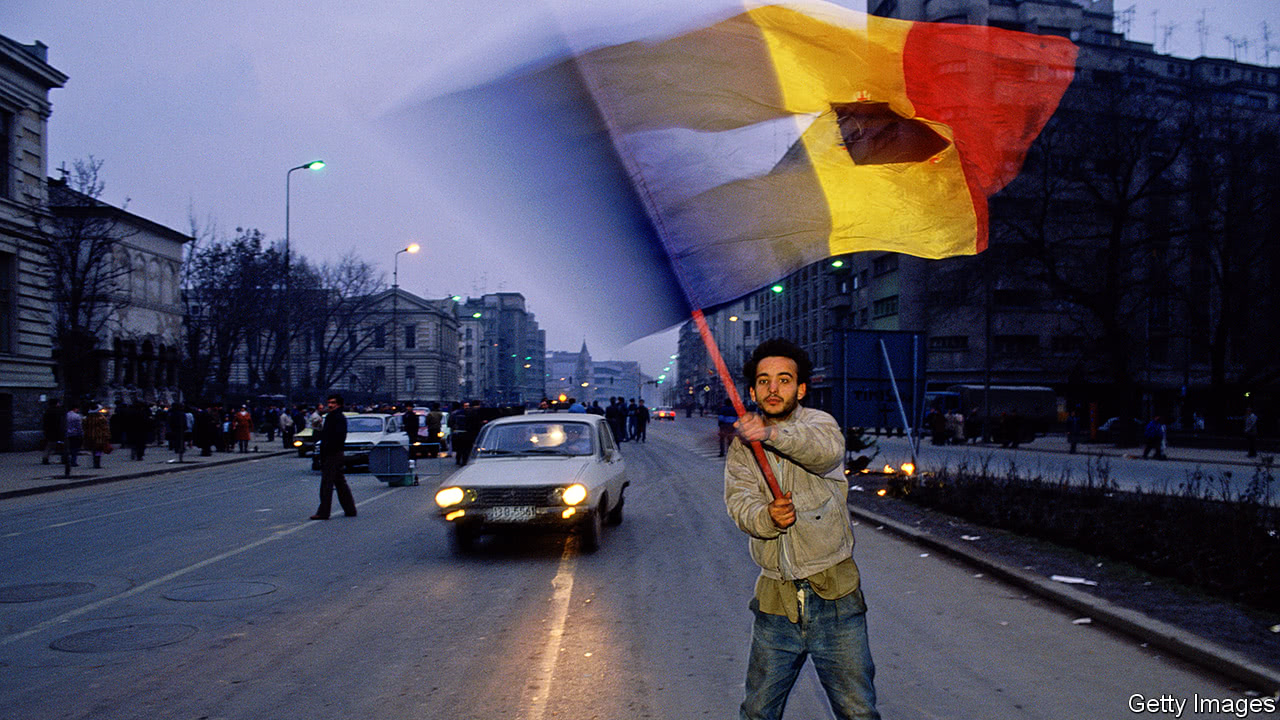Brought to book in Bucharest. Romania’s ex-president, Ion Iliescu, goes on trial. Romanians hope to learn what really happened during the revolution
(purely personal view, based on over two decades of previous research and publications)
My but the past fades/is fading fast…either the author is too young to have followed the event at the time or he or she only knows the subject superficially or is suffering from topical amnesia…the author appears to suggest that there was a distinction between “Ceausescu loyalists” and “the terrorists”…with the former existing and the latter being invented!…damn, if this doesn’t make me feel my age!!!
“A few Ceausescu loyalists held out, and arms were distributed to civilians to resist mysterious “terrorists” who turned out not to exist.”
even the briefest Google search of “Ceausescu loyalists terrorists” will bring up articles from the time (see further down) which make clear that at the time these terms were used interchangeably…they were synonyms…in fact, ironically, by admitting the existence of “Ceausescu loyalists”–or in other words, the terrorists–the author echoes what Ion Iliescu and Army General Nicolae Tudor said on television at the time: “Actually, I must tell you that we are not dealing with a large number of terrorist elements, but rather they are specially trained and equipped for this kind of action…” (see page 516 bottom of first column and page 517 top of second column below) and they are “FEW in number, but embittered.” (see page 518 top of first column below). [from an article I published in late 1999 in EEPS]


https://romanianrevolutionofdecember1989.wordpress.com/the-uses-of-absurdity-romania-1989-1999/
Here are just a few of the links that should make this clear…followed by The Economist article.
http://articles.latimes.com/1989-12-25/news/mn-702_1_provisional-government/2
https://www.csmonitor.com/1989/1227/oroma.html
https://archives.nbclearn.com/portal/site/k-12/flatview?cuecard=63934
Brought to book in Bucharest Romania’s ex-president, Ion Iliescu, goes on trial
Romanians hope to learn what really happened during the revolution

TO THIS day, Romanians remain baffled by what actually happened during the violent spasm which rid the country of its communist dictator in December 1989. Seeking to give them a definitive answer, on April 17th prosecutors indicted Ion Iliescu, the first post-communist president of the country, for crimes against humanity allegedly committed during the revolution he was instrumental in leading.
If the trial of the 88-year-old two-time president succeeds in settling the record that would be a fine thing. It probably will not happen, though. In the rest of eastern Europe, the end of communism was a mostly peaceful affair, but in Romania things were different. The revolution started in the western city of Timisoara, where dozens were shot. Nicolae Ceausescu, the communist dictator, then called a rally in Bucharest. But when, on television, people could be heard shouting, “Down with the dictator,” the game was up. He fled in a helicopter but was arrested, and executed alongside his wife on Christmas Day.
Mr Iliescu is a divisive figure. Detractors despise him for his communist past and for, as they believe, hijacking the revolution. Former communists did prosper after the revolution; but that was true from Prague to Vladivostok. The former president is already on trial for his alleged role in orchestrating violence committed by miners he called to come and crush anti-government protests in Bucharest in June 1990, a far less murky case.
Since the indictment Mr Iliescu has said nothing. But on April 13th he wrote on his blog that he was proud of what he did, that it was ridiculous to pretend that democracy and its institutions should have been established the second the Ceausescus fled, and that he is being made a scapegoat. Many victims’ families will be relieved when he goes on trial, as they have never had clear answers as to why their loved ones died. Valentina Radu, aged 85, a retired teacher, said: “He may not go to jail, but history has to know the truth about Iliescu and the revolution.” After so many years, however, it probably won’t be the whole truth, or even wholly true.